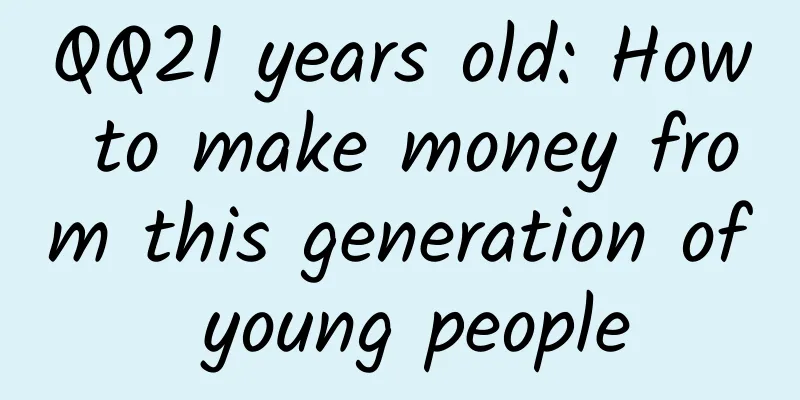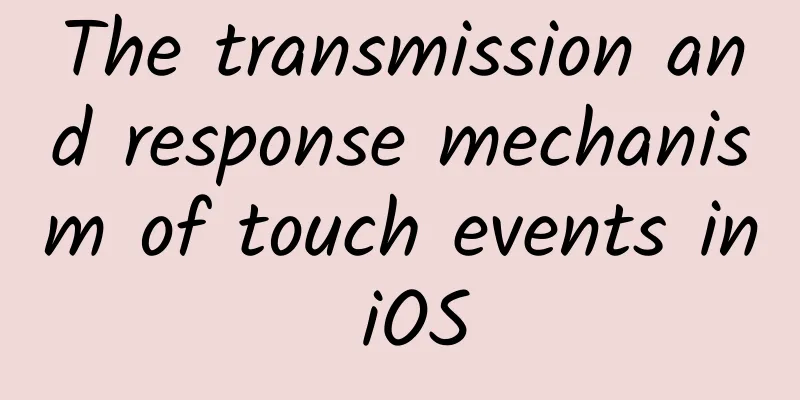It's been ten years. What else can you do besides watching TV series on your iPad?

|
When Jobs entered, there was a leather sofa and a round coffee table behind him. It's hard not to notice this strange display of the press conference. Most of the time, Jobs prefers to use a simple black square table to display products. Against the black background of the stage, he can attract everyone's attention by simply lighting up the screen. But there are some exceptions. For example, in 2005, the small and exquisite first-generation iPod nano was hidden in the small pocket of his jeans. In 2008, he slipped the world's thinnest laptop MacBook Air out of a manila envelope. The product to be released this time is also a special one. Jobs called it a device "between the iPhone and the MacBook". Without further explanation, he lifted the black cloth on the sofa, held up the iPad, and turned on the screen to the audience, "That's what it looks like." In the subsequent demonstration, he sat on the sofa, naturally crossed his legs, and began to demonstrate browsing the web, sending and receiving emails, and managing photos in a way that no one had ever seen before... At this launch event in early 2010, Jobs showed the iPad to the world for the first time. He said that the iPad has an advantage over the iPhone and MacBook in handling "web pages, emails, photos, videos, music, games, and e-books." Ten years later, the iPad has moved beyond these most basic needs and transformed into a completely new set of computing devices. "Enlarged version" iPhone The first generation iPad is an easy-to-understand product. It is essentially an enlarged version of the iPhone. The hardware design of iPad is completely derived from that of iPhone. It has an integrated body, a full screen on the front and a Home button, and a similar layout of power and volume buttons. The A4 processor it uses is based on the Samsung SoC on iPhone 3GS, and this chip was later used in iPhone 4 and the fourth-generation iPod touch. From the hardware point of view, the biggest difference is only the screen size. Initially, iPad and iPhone ran almost the same iPhone OS system, so in addition to Apple's own Safari browser, photos, email and other native iPad apps, it can also run all iPhone apps. Half a year later, at WWDC, iPhone OS was officially renamed iOS. At first, most third-party apps were not adapted for iPad and could only display a small interface in the middle of the huge iPad screen. Users could also manually zoom in to twice the size of this interface, but the rendering resolution would not change, so it would look a bit blurry. Some "old stubborn" apps have not been adapted for iPad until today, such as Instagram, which has more than 1 billion active users. In 2010, three years after the release of the iPhone, more and more consumers began to be interested in this "multi-touch interaction", and the development ecosystem based on the iPhone OS also grew rapidly. Compared with the iPhone, the iPad can better reflect the advantages of touch interaction because it is larger. Users can more easily use their fingers to slide menus, zoom in and out pictures and maps, and cut five fruits in the "Fruit Ninja" game. The final killer of iPad is the price. Compared with the latest iPhone 3GS at that time, the first generation iPad has a more "high-end" metal shell, more advanced chips, and a larger screen, but the price is only $499, which is $100 cheaper than the iPhone. The only two functions that iPad sacrificed are cellular network and camera. Moreover, iPad is a device with certain "sharing" attributes. One iPad can let the whole family experience the beauty of "smart devices".
This greatly catered to the needs of users at the time. In 2010, most ordinary people were still standing outside the door of the "mobile Internet" era. The iPad gave them a chance to "see the future" and became the first stop for many people to "get into Apple." In those years, the iPad was even the only "computer" in many families and the first "smart device" that many post-00s came into contact with. The iPad is the fastest-growing product in the history of Apple and even the entire consumer electronics industry. In April 2010, the first iPad was released, and sales exceeded $8 billion in just eight months. In 2011, this number more than doubled to $20.4 billion, and in 2012, it reached $30.1 billion. It took only three steps to reach the top. Crisis in a prosperous era iPad sales are skyrocketing, and the speed of its updates and iterations is also astonishingly fast. In March 2011, Apple launched the iPad 2, which significantly reduced its thickness and weight and equipped it with two cameras on the front and back. A year later, the third-generation iPad with a Retina screen was released, and only half a year later, the iPad mini and the fourth-generation iPad were released at the same time. Three years and five new products have passed, and the iPad has continued to evolve and rise. In October 2013, Apple changed the name of the iPad series and launched the iPad Air, narrowing the screen borders to further enhance its thin and light performance. At the same time, it also launched the iPad mini 2, equipped with a Retina screen and the latest A7 processor at the time, making the iPad mini 2 a "generation of magic machine" with an extremely long lifespan. In 2013, iPad sales totaled $32 billion, the best sales performance the iPad has ever achieved. Since then, the iPad's "good days" have ended. One of the important factors for the success of iPad is the development of mobile Internet. However, with the development and popularity of smart phones, tablet computers can only play a supporting role in this era. Smartphones have become the "protagonist" of the mobile Internet era | Apple In the fall of 2014, Apple released the iPhone 6 and 6 Plus, and began to try the "large screen strategy" on the iPhone. This strategy was a huge success, and iPhone sales ushered in a wave of explosive growth, especially in Greater China. That was the peak period of the fastest development of smartphones. The performance of iPhones was getting stronger and stronger, the screen was getting bigger and bigger, and they were becoming more and more popular. With the advent of the 4G era, people were getting more and more accustomed to using their mobile phones to obtain information and consume content, whether it was text, sound or video. This caused the iPad to lose its advantage as a "content consumption device" because for most people, a 5.5-inch iPhone 6 Plus is enough to watch videos and play games, and every family member has their own smartphone, so they don't need a 7-inch or 9.7-inch iPad. iPad sales have been declining year after year since 2014. By 2017, annual sales had fallen to $19.2 billion, less than two-thirds of its peak. Productivity and education In Jobs's initial presentation, the iPad was a device mainly used for "content consumption". You can use it to read books, watch movies, listen to music, and get a better experience on a larger screen. The increasingly popular large-screen mobile phones eroded this part of the demand, and the iPad had to find a new way out. Apple responded quickly. In June 2015, at WWDC, the iPad received its most important software update since its birth, iOS 9. Apple has designed a new "multitasking" interaction mechanism for iPad in iOS 9. Users can operate two apps at the same time through "split-screen display", slide out another app from the right side of the screen, and drag text, pictures, videos and other content to different apps through "drag & drop", allowing data to move smoothly between apps. This has become the basis for the iPad's unique software interaction. If the previous iPad was just an "enlarged version of the iPhone" in terms of software, starting with iOS 9, the iPad has a set of software that is more suitable for it.
Three months later, in September 2015, the iPad Pro was released. Everything can be explained. Why did Apple make a set of iOS 9 that has high performance requirements and is quite complex? Because the iPad Pro has changed from a "content consumption" device to a "content production" device. Between the iPhone and the MacBook, the iPad has always been closer to the iPhone. The advent of the iPad Pro marks the beginning of its development in another direction. The iPad Pro equipped with Smart Keyboard and Apple Pencil has become a completely new device, a new computer with a touch screen, which can doodle and draw, and run iOS software.
In the following years, the iPad has gone further and further on the road of productivity. In October 2018, the newly designed iPad Pro was launched, integrating various advanced technologies. Equipped with wide-angle Face ID, it can recognize facial unlocking in any direction; it has 102 built-in magnets for adsorbing the new keyboard case and Apple Pencil, and can charge the Pencil wirelessly. iOS has also added more and more features for iPad, including the Dock application dock similar to macOS, a file system, and richer multitasking operations. In 2019, Apple finally separated the iPad software from iOS and launched iPad OS. iPad has its own exclusive software, and has established a closer connection with macOS through features such as "Sidecar". In addition to productivity, Apple has also found other development paths for the iPad. In 2017, Apple launched the low-priced sixth-generation iPad specifically for the needs of the education field. While providing learning tools for primary and secondary school students, it is also cultivating more potential users who are accustomed to using the iPad for "creation." What is a computer? After ten years of development, the iPad product line has become so rich that it seems a bit complicated. There are relatively cheap iPads that are mainly aimed at the education market, mid-range iPad Air and mini, and iPad Pro that pushes "productivity" performance to the extreme. Looking back at the past ten years of the iPad, its starting point was simple and clear. At that time, Steve Jobs sat on the sofa and summarized the product with only seven application scenarios, leading it to success. But this path soon became unfeasible, and the entire tablet market was shrinking year by year under the pressure of smartphones.
Today, it is difficult to accurately define the iPad with one word. Is it a "content consumption device"? Or a "productivity tool"? Or a "teaching aid"? These are all correct, but not accurate. At the end of 2017, Apple released an iPad Pro advertisement. In the advertisement, a little girl walked around the streets with her iPad, doing all kinds of things, such as work, communication, and entertainment. Finally, her mother asked her, "What are you doing on the computer?" The girl asked back, "What's a computer?" This ad has caused quite a bit of controversy, with many people believing that it "belittles" the existence of computers. But in fact, it accurately reflects the difference between iPad and computers. iPad is more mobile, more flexible, and has richer multimedia functions. You can use it to learn, entertain, and do a variety of things. Most schools will offer special classes to teach you how to use a computer, but most schools will not offer classes to teach you how to use an iPad. It all depends on how you use it.
Some people would use the phrase "productivity before purchase, iQiyi after purchase" to ridicule the immaturity of the iPad as a productivity tool. But more and more people are using iPads to do all kinds of things, such as writing this article on my iPad Pro. In addition, I also use it to edit photos, manage blogs, scan some paper documents, sign contracts with Apple Pencil... I also have friends who use iPad Pro to connect to Github to manage code; use iPad Pro to design icons, draw, compose music, and take notes in class. Of course, we all use it to watch videos, listen to music, and send and receive messages. In terms of sales, iPad has not yet recovered to its peak level. Since hitting the bottom in 2017, the entire iPad business has begun to grow at a relatively slow pace. This is different from the previous "riding the wave of the times". The iPad has entered a more complex and difficult field. But it has more possibilities because of this. It is no longer the tablet that has advantages over the iPhone only in seven application scenarios, but an iPad that is used completely differently in everyone's hands. |
<<: In 2020, the mobile phone giant will be reinstalled and "launched"
>>: Update your iPhone to iOS 13.4 and you don’t need to bring your car keys anymore!
Recommend
5 core steps to acquire app users
[[132832]] Many startups are happy to try to find...
3 concepts for practical data analysis and decision-making!
The new graduates have a good understanding of th...
If a woman is not ruthless, her position will not be stable. Here are 12 unique skills to intimidate men
In love ■Are you experiencing this, too?■ Emotion...
Why do individuals and institutional investors love mobile phones so much?
An outsider claims to make the best mobile phone ...
Detailed description of the INotifyPropertyChanged interface
In Windows Phone Development 8.1: Data Binding, w...
Is paid video a real trend or a false boom?
It is not new to develop membership payment busin...
The child has already committed self-harm, why do some parents still think that "he is pretending"?
A pair of parents came with their child to the ps...
Huya Live Operation Data Analysis
In order to have a deeper understanding of the li...
China Automobile Dealers Association: China's auto dealer inventory warning index was 60.7% in December 2020
On December 31, 2020, the latest issue of the &qu...
Apple introduces peer group benchmarking tool in App Analytics: compare apps with similar apps
On March 2, Apple introduced a peer group benchma...
The "Four-Hour Sleep Method"? Is it really reliable to imitate animals in sleeping?
"Turning around the red pavilion, lowering t...
Analysis of competing live streaming apps: In the battle for national time, how can live streaming apps gain users’ usage time?
Live streaming is a form of Internet content diss...
How to develop an online event planning plan?
Even those who are just starting out in operation...
Methods of APP promotion and drainage
When operating an APP, one will inevitably have t...
Does drinking coffee cause anemia? Here’s what you need to know about drinking coffee healthily
In recent years, when people need to refresh them...









